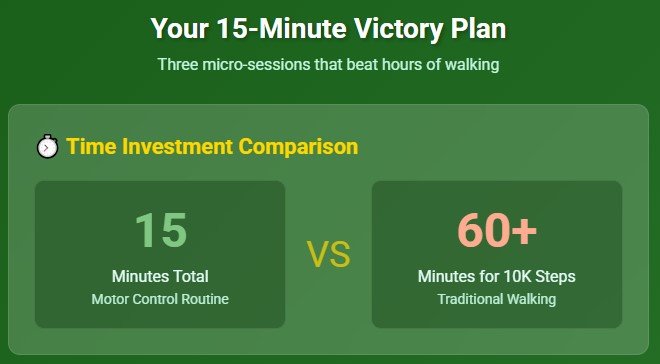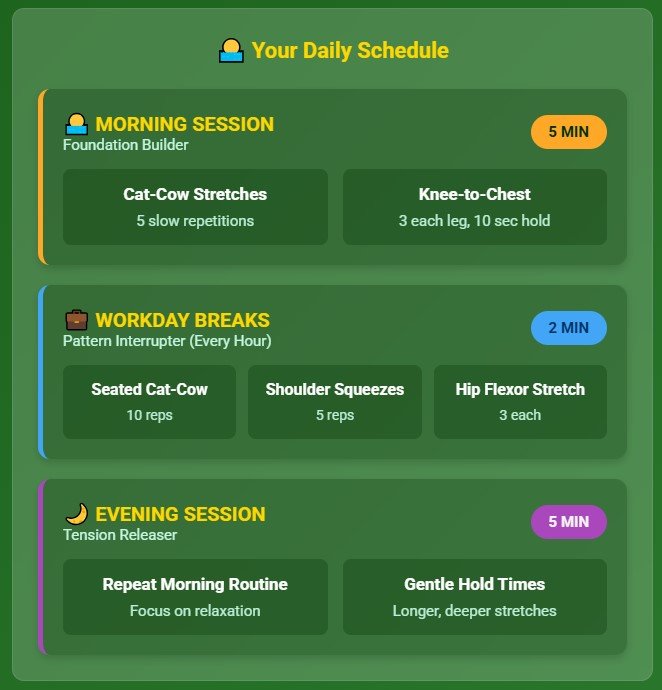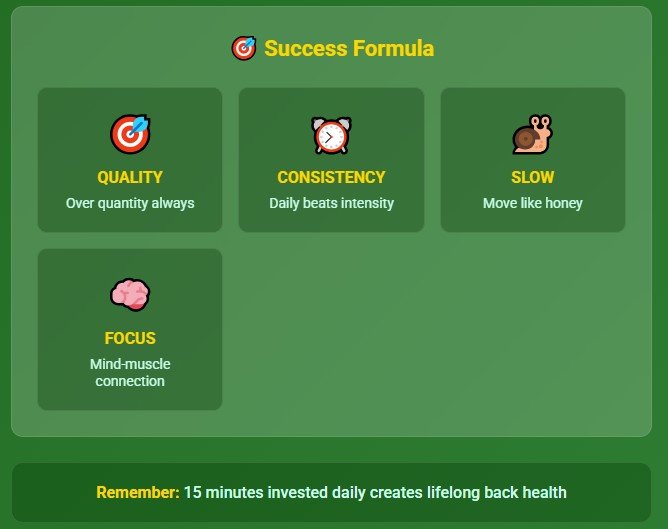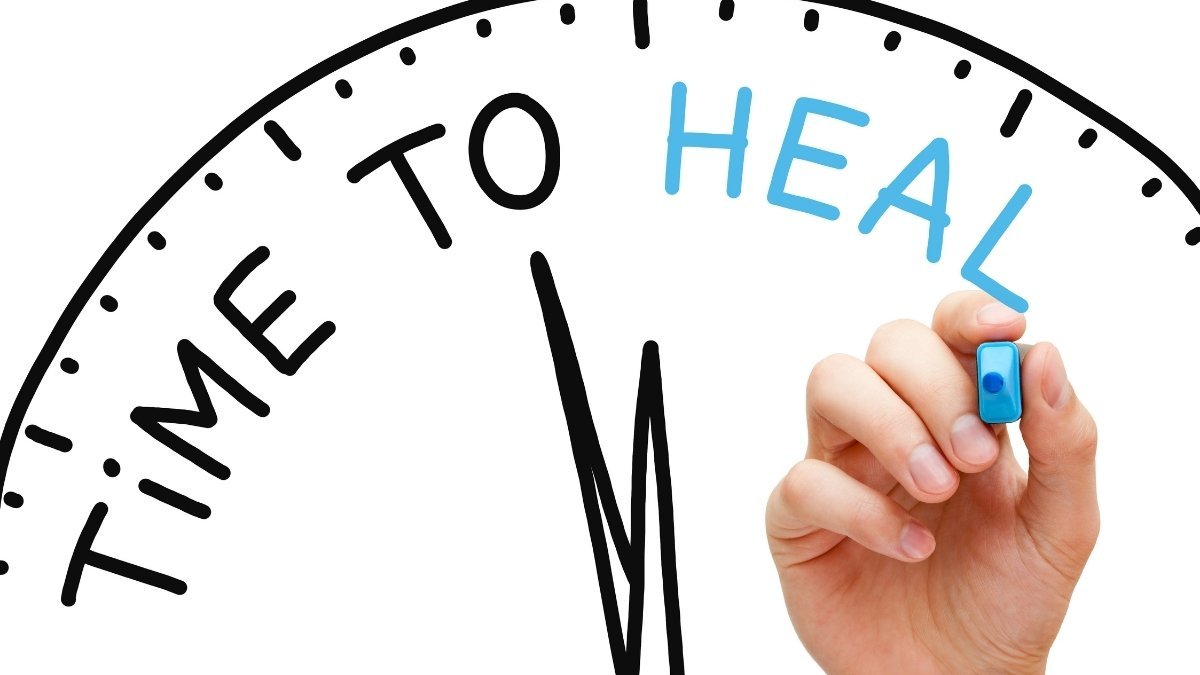
Spoiler alert: It’s not 10,000 steps
You’ve been religiously hitting your step goal. Your fitness tracker buzzes with satisfaction every evening. Yet somehow, your back still aches when you roll out of bed each morning.
Here’s the truth that might surprise you: Those 10,000 steps you’re chasing? They’re doing almost nothing for your back pain.
I know, I know. It sounds crazy. But here’s what physiotherapists worldwide have discovered—and what the fitness industry doesn’t want you to know.
The Movement Revolution That’s Changing Everything
Global Back Pain Crisis by the Numbers
The magnitude of suffering and the treatment gap
Current Global Impact
Treatment Success Rates Comparison
2050 Projections
Data sources: Global Burden of Disease Study, WHO reports, Clinical research studies
While you’ve been counting steps, 619 million people globally are suffering from back pain. That’s costing us $200 billion annually. And walking? It’s only helping about 26% of them.
But there’s another approach that’s quietly achieving 55-78% success rates.
It’s called motor control exercise, and it’s the movement technique that physiotherapists are now prioritizing over everything else—including your beloved step counter.
Dr. Janice Hirsch from Cary Orthopaedics puts it simply: “Core strength training is more effective than resistance training for alleviating chronic low back pain.”
But this isn’t your typical “strengthen your core” advice. This is about something much more specific.
Why Your 10,000 Steps Aren’t Working (And Never Will)

Let me blow your mind for a second.
The 10,000 steps recommendation has zero scientific basis. Zero.
It came from a 1965 Japanese marketing campaign. They were selling a device called “Manpo-kei”—literally “10,000 steps meter”—before the Tokyo Olympics. The number 10,000 was chosen because the Japanese character looks like a person walking.
That’s it. That’s the “science.”
Dr. I-Min Lee from Harvard says it best: “The name was a marketing tool… there was not really any basis to it.”
Here’s what happens when you have back pain and try to walk it off:
Your muscles aren’t activating properly. Recent research using advanced biomechanical modeling shows that people with chronic back pain have significantly reduced muscle activation during walking. So instead of fixing the problem, you’re reinforcing bad movement patterns.
It’s like trying to fix a flat tire by driving on it more. You’re just making things worse.
The One Movement That Changes Everything

So what’s this magical exercise that works better than walking?
It’s probably the simplest thing you’ve never done consistently: the Cat-Cow stretch (See the Video Below).

I can practically hear you rolling your eyes. “That’s it? Some yoga move?“
But here’s why it’s revolutionary:
This movement targets the exact muscles that walking can’t touch. We’re talking about your deep stabilizers—the transverse abdominis, multifidus, diaphragm, and pelvic floor muscles. These form your spine’s natural “corset.”

When these muscles work properly, they create a stable foundation for every other movement you make. When they don’t? Hello, back pain.
The Science That Will Make You a Believer
Scientific Evidence
Research that revolutionized back pain treatment
🔬 2024 Landmark Study Results
⚙️ How Extension Exercises Work
📈 Evidence Timeline
Key Insight: Extension-based motor control exercises address the root biomechanical causes of back pain, not just symptoms.
Let’s talk numbers for a second, because they’re pretty mind-blowing.
A 2024 study with one-year follow-up found that extension-based movements (like the Cat-Cow) were significantly more effective than other exercises for chronic back pain. We’re talking about actual structural changes in your spine.
Here’s why: Every time you sit at your desk, drive your car, or hunch over your phone, you’re creating flexion stress on your spine. Extension exercises reverse this damage by:
- Creating negative disc pressure that promotes healing
- Activating the deep muscles that support your spine
- Retraining your nervous system’s pain responses
The results speak for themselves:
- Motor control exercises: 55-78% success rate
- Walking programs: 26% success rate
- Comprehensive therapy with motor control: 78% success rate
The Real Problem: We’re Sitting Ourselves to Death

Want to know what’s causing your back pain? It’s not because you’re not walking enough.
It’s because you’re sitting too much.
Check these stats:
- Prolonged sitting increases back pain risk by 42%
- Prolonged driving increases it by 103%
- Kids now spend 51.4% of their time sedentary
- Watching TV increases back pain by 23% in children
- Computer/mobile use bumps it up by 63%
The solution isn’t more steps. It’s interrupting these patterns with targeted movements that address what sitting does to your body.
The 15-Minute Daily Routine That Beats 10,000 Steps

Ready for the practical stuff? Here’s exactly what physiotherapists recommend:
Morning (5 minutes):

The Foundation Builder
Start with 5 Cat-Cow stretches:
- Get on hands and knees
- Arch your back while lifting your head (cow)
- Round your spine toward the ceiling while tucking your chin (cat)
- Move slowly, like you’re moving through honey
Then do 3 knee-to-chest stretches on each leg:
- Lie on your back
- Pull one knee toward your chest
- Hold for 10 seconds
- Feel that sweet decompression
Workday Breaks (2 minutes every hour):

The Pattern Interrupter
You can do these right at your desk:
- 10 seated Cat-Cow movements (hands on knees)
- 5 shoulder blade squeezes
- Stand and do 3 hip flexor stretches
Evening (5 minutes):
The Tension Releaser
Repeat your morning routine, but focus on relaxation. This is your spine’s way of saying “thanks for taking care of me today.”
Total time investment: 15 minutes spread throughout your day.
Compare that to the hour+ it takes to hit 10,000 steps, and tell me which makes more sense.
The Myths That Keep You in Pain
Myth Busters
The lies keeping you trapped in pain
💡 The Real Truth
Let’s bust some myths while we’re here, because these misconceptions are keeping you stuck:
Myth #1: “Bad posture causes back pain.” Research on 54+ studies found zero correlation between posture and pain. People with “perfect” posture get back pain just as often as those who slouch.
Myth #2: “My MRI shows damage, that’s why I hurt.” Here’s a mind-bender: 88% of pain-free 60-year-olds show disc degeneration on MRI. Even 30% of pain-free 20-year-olds have disc bulges. Your “damaged” spine might be completely normal.
Myth #3: “I need to strengthen my core.” Excessive core bracing can increase muscle tension and worsen symptoms. Your spine is naturally robust—it doesn’t need constant protection.
Myth #4: “Rest is best for back pain.” This is the big one. Bed rest—the old “gold standard”—prolongs recovery. Studies show that 8 weeks of bed rest causes massive muscle wasting that takes 6+ months to recover from.
Your Body’s Amazing Ability to Heal

Here’s what gives me hope (and should give you hope too):
Your spine is incredibly adaptable. The research on neuroplasticity shows that motor control exercises literally rewire how your nervous system processes pain signals.
One study found that these exercises improve “conditioned pain modulation”—basically, they teach your brain to turn down the volume on pain signals.
Translation: Your body wants to heal. You just need to give it the right tools.
The Economic Reality Check
The Hidden Cost Crisis
What back pain is really costing you and society
💰 Your Personal Financial Impact
🏢 National Economic Burden
🔬 The Research Funding Scandal
📈 Return on Investment
Let’s talk money for a minute, because this affects all of us.
Back pain costs the U.S. 186.7 million lost workdays annually. If you have back issues, you’re spending an average of $1,440 more on healthcare than someone without back problems.
Meanwhile, the NIH slashed back pain research funding by more than half—from $170 million to $69 million—while arthritis gets $323 million despite causing less disability.
The solution isn’t more research. It’s applying what we already know.
What Happens When You Start Today

Week 1-2: Foundation. You might feel silly doing Cat-Cow stretches. Do them anyway. Your spine is learning new patterns.
Week 3-4: Recognition. Your morning stiffness starts improving. You notice you’re not reaching for your back as much during the day.
Month 2-3: Transformation. This is where the magic happens. Research shows significant functional improvements typically occur during this window.
Long-term: Freedom. You stop thinking about your back because it stops being a problem.
The Choice is Yours
You can keep chasing those 10,000 steps, hoping that eventually they’ll fix your back pain.
Or you can try something that works.
15 minutes a day of targeted movement versus hours of ineffective step counting.
78% success rate versus 26%.
Addressing the root cause versus treating symptoms.
The choice seems pretty obvious to me.
Your Next Step (Pun Intended)
Tomorrow morning, before you check your step counter, try this:
Set a 5-minute timer. Do 5 Cat-Cow stretches and 3 knee-to-chest stretches on each leg. Set hourly reminders for 2-minute movement breaks. Before bed, repeat the morning routine.
Give it two weeks. Track how you feel each morning on a scale of 1-10. Notice changes in your daily function.
I’m willing to bet that by day 14, you’ll care a lot less about hitting 10,000 steps and a lot more about how good your back feels. Because here’s the truth: Movement quality beats movement quantity every single time.
Your spine is waiting for you to figure that out. Ready to ditch the step counter and try movement that works? Your back will thank you.






